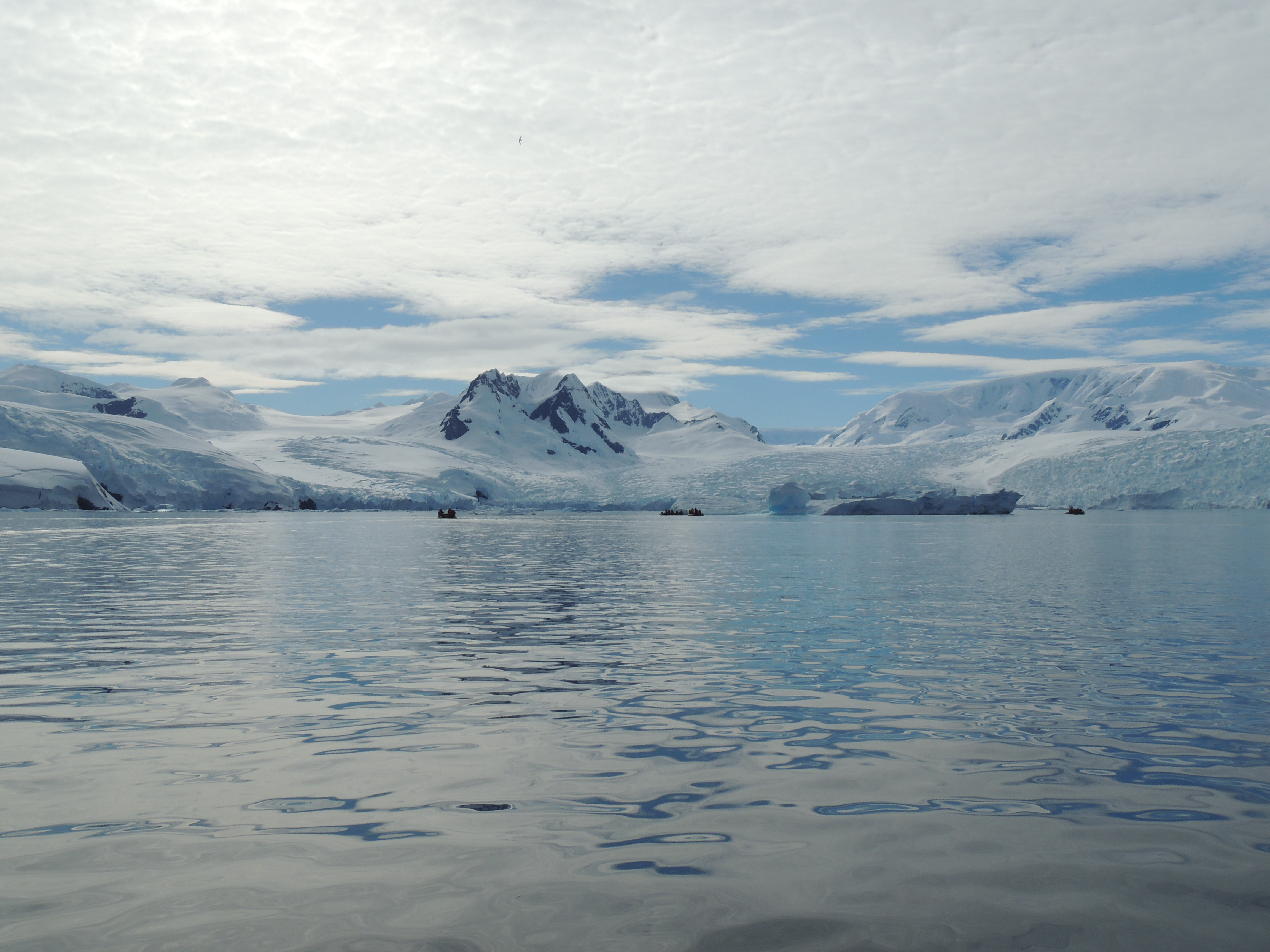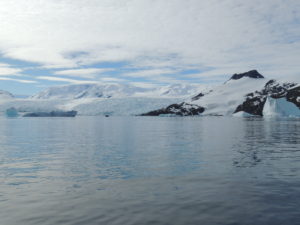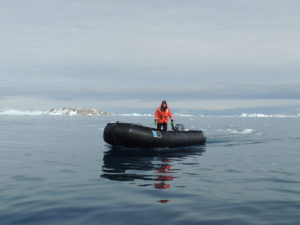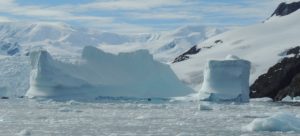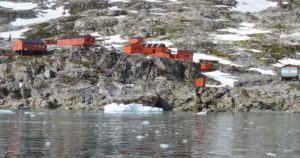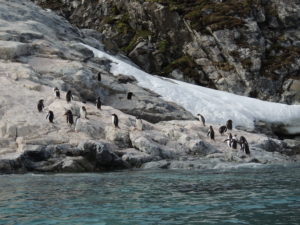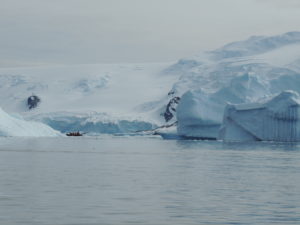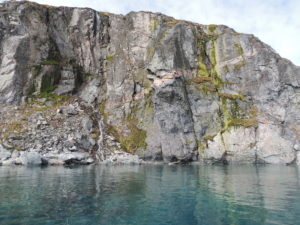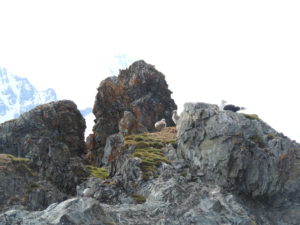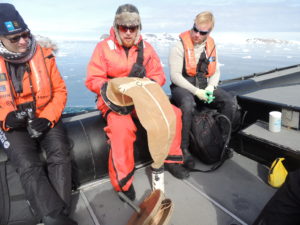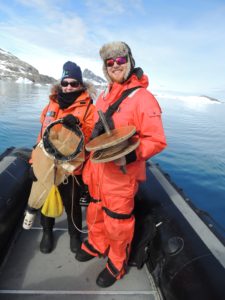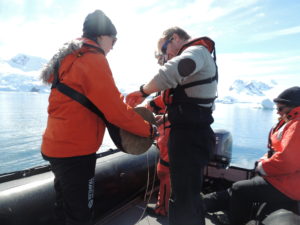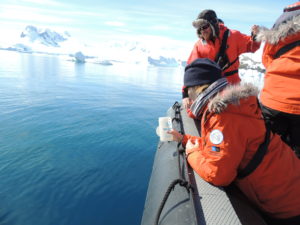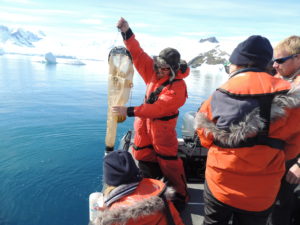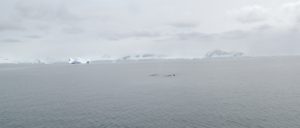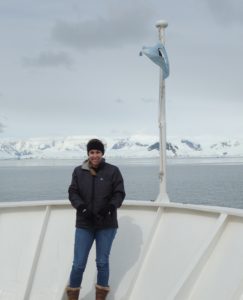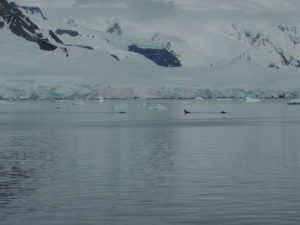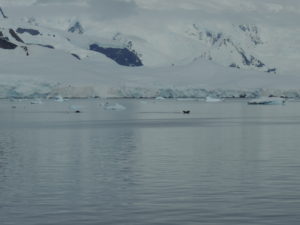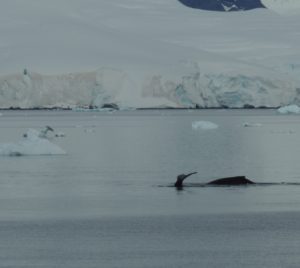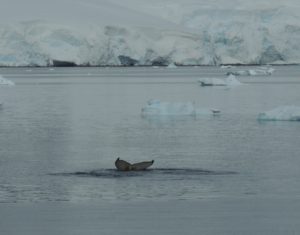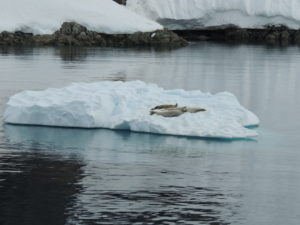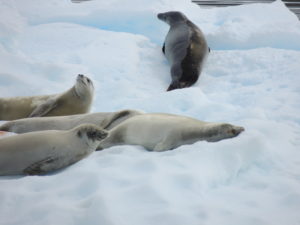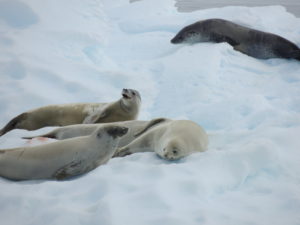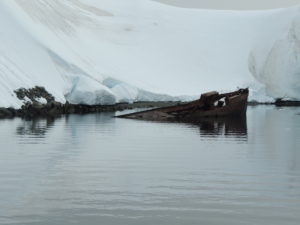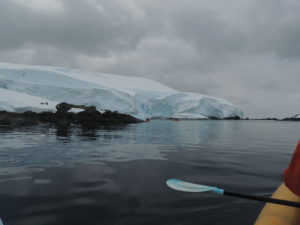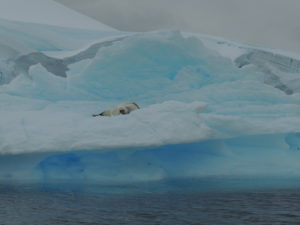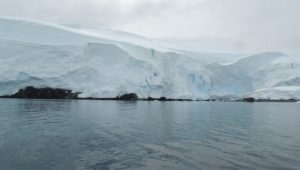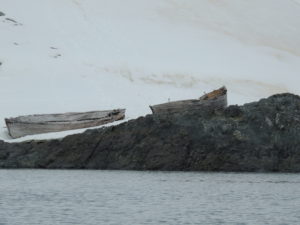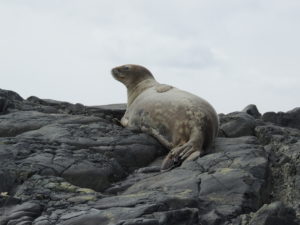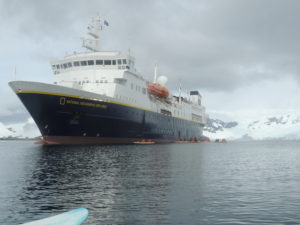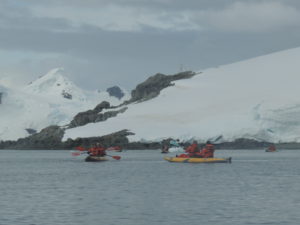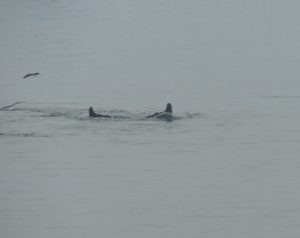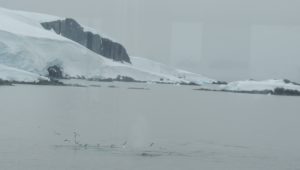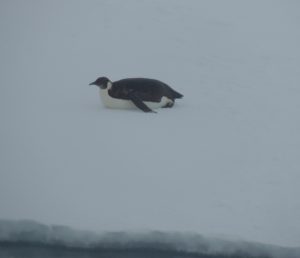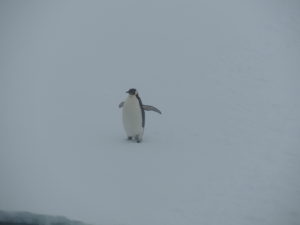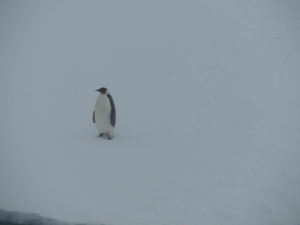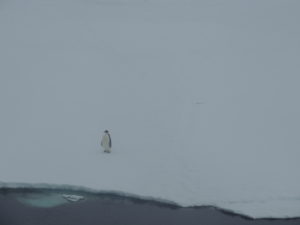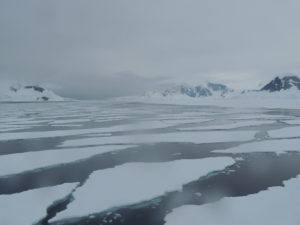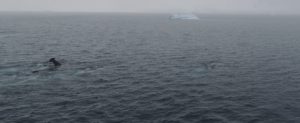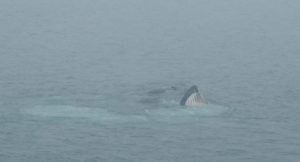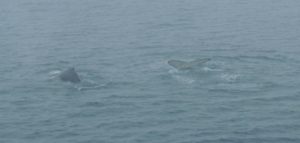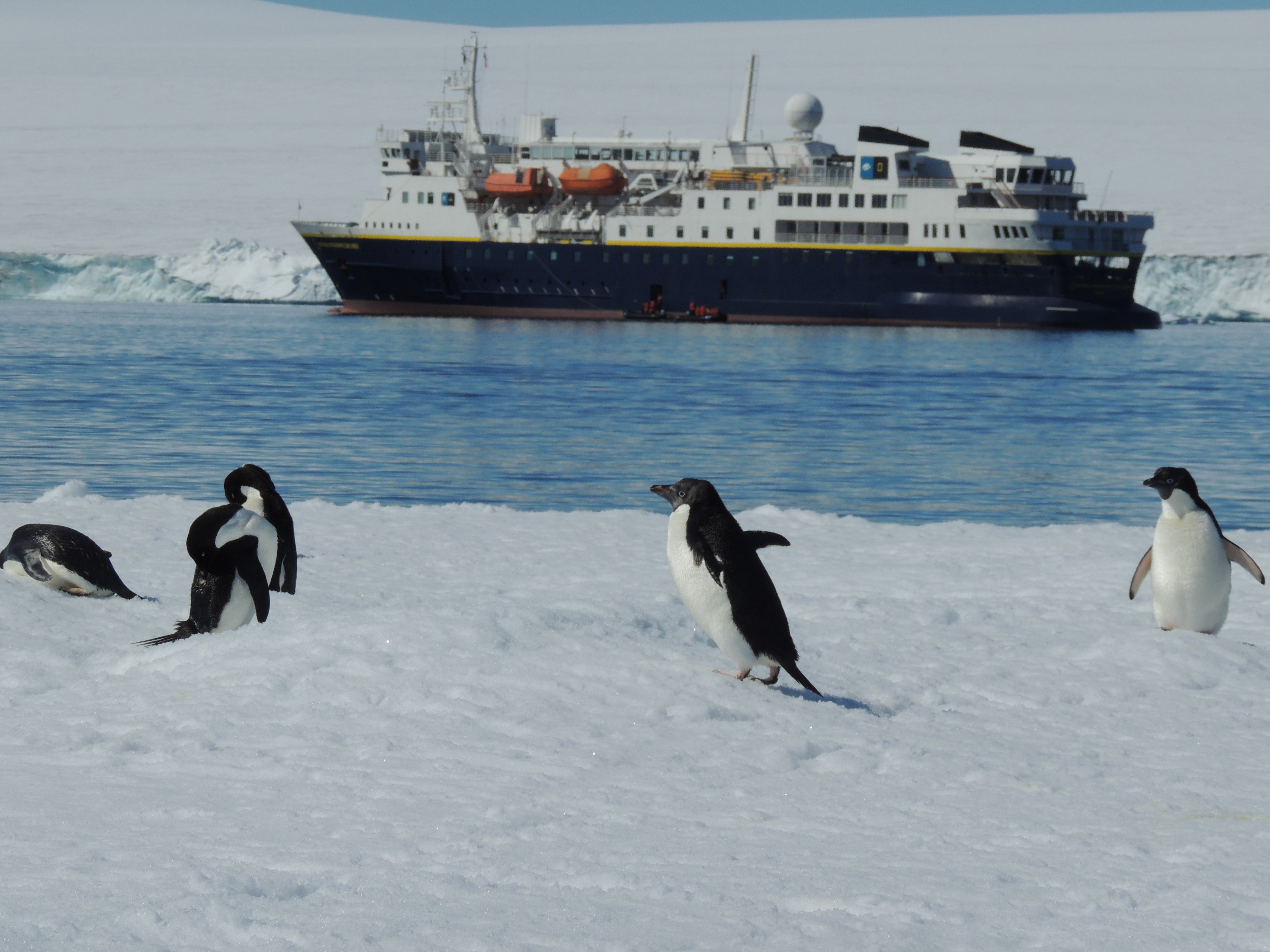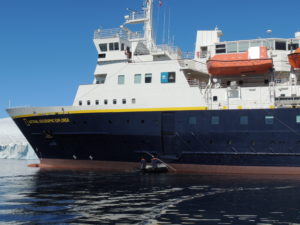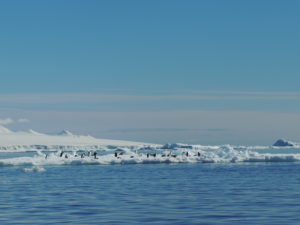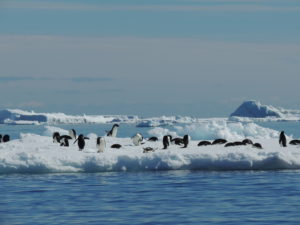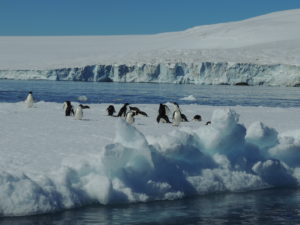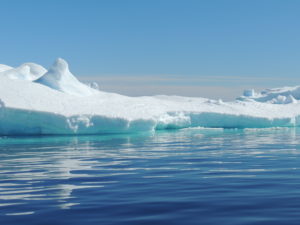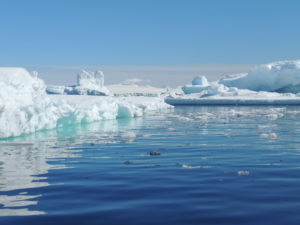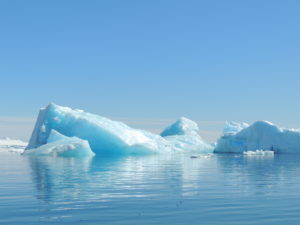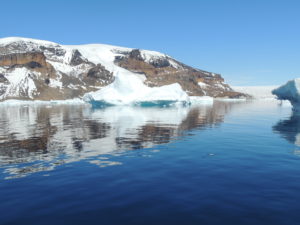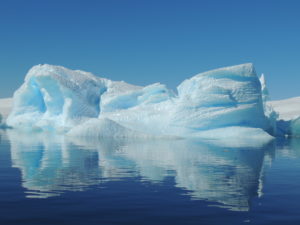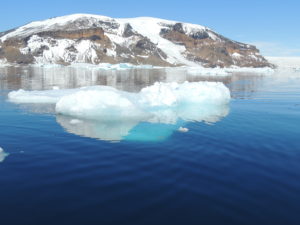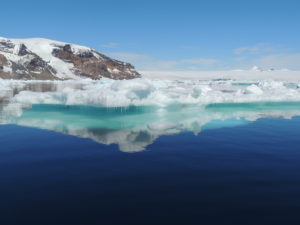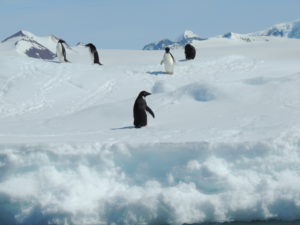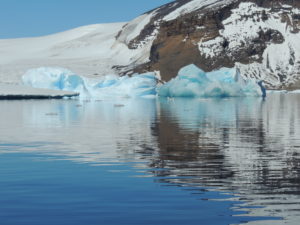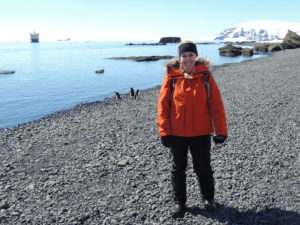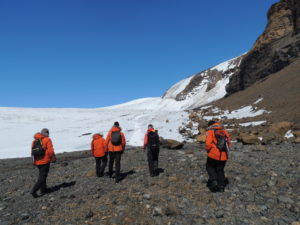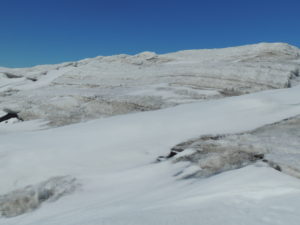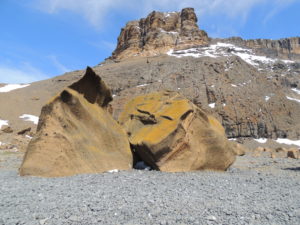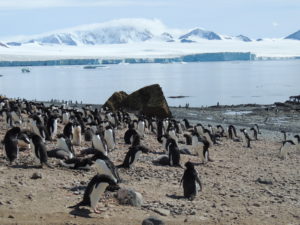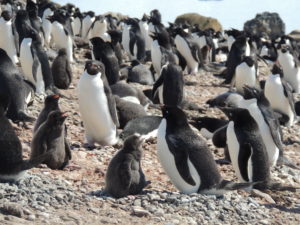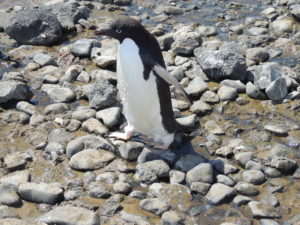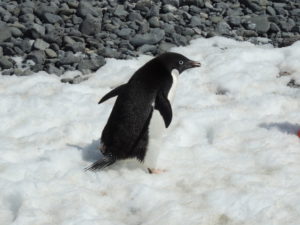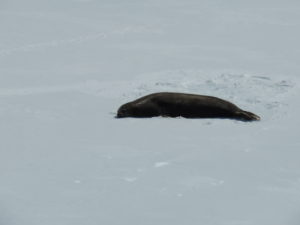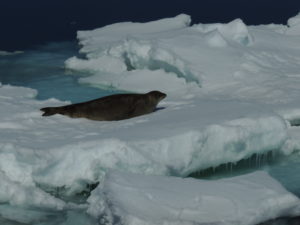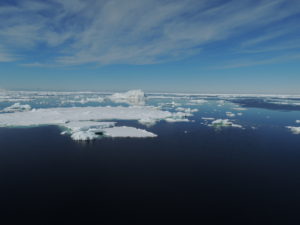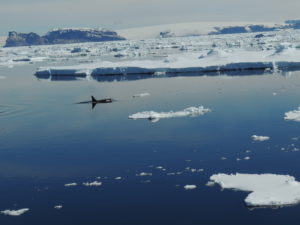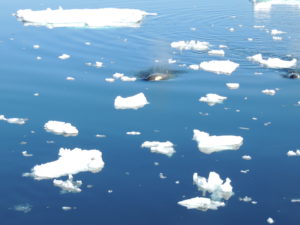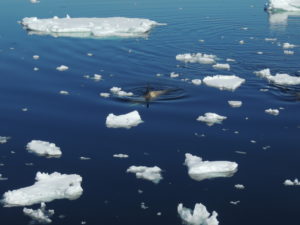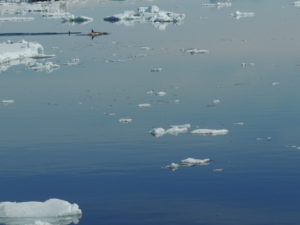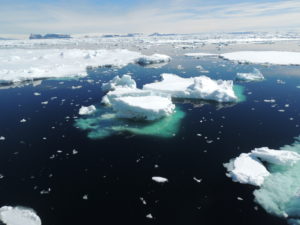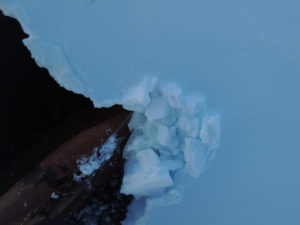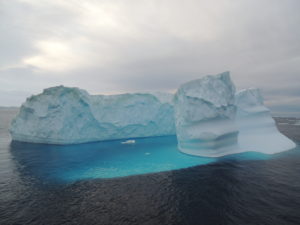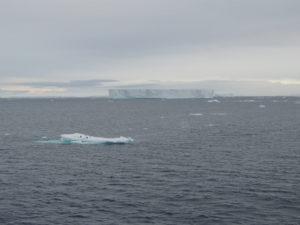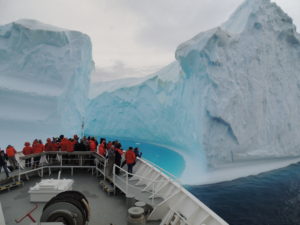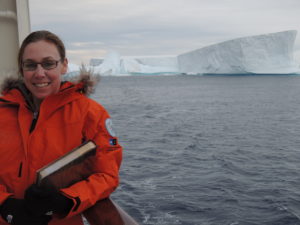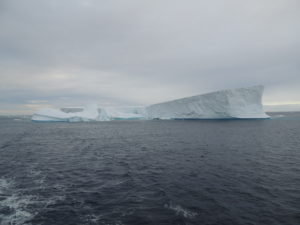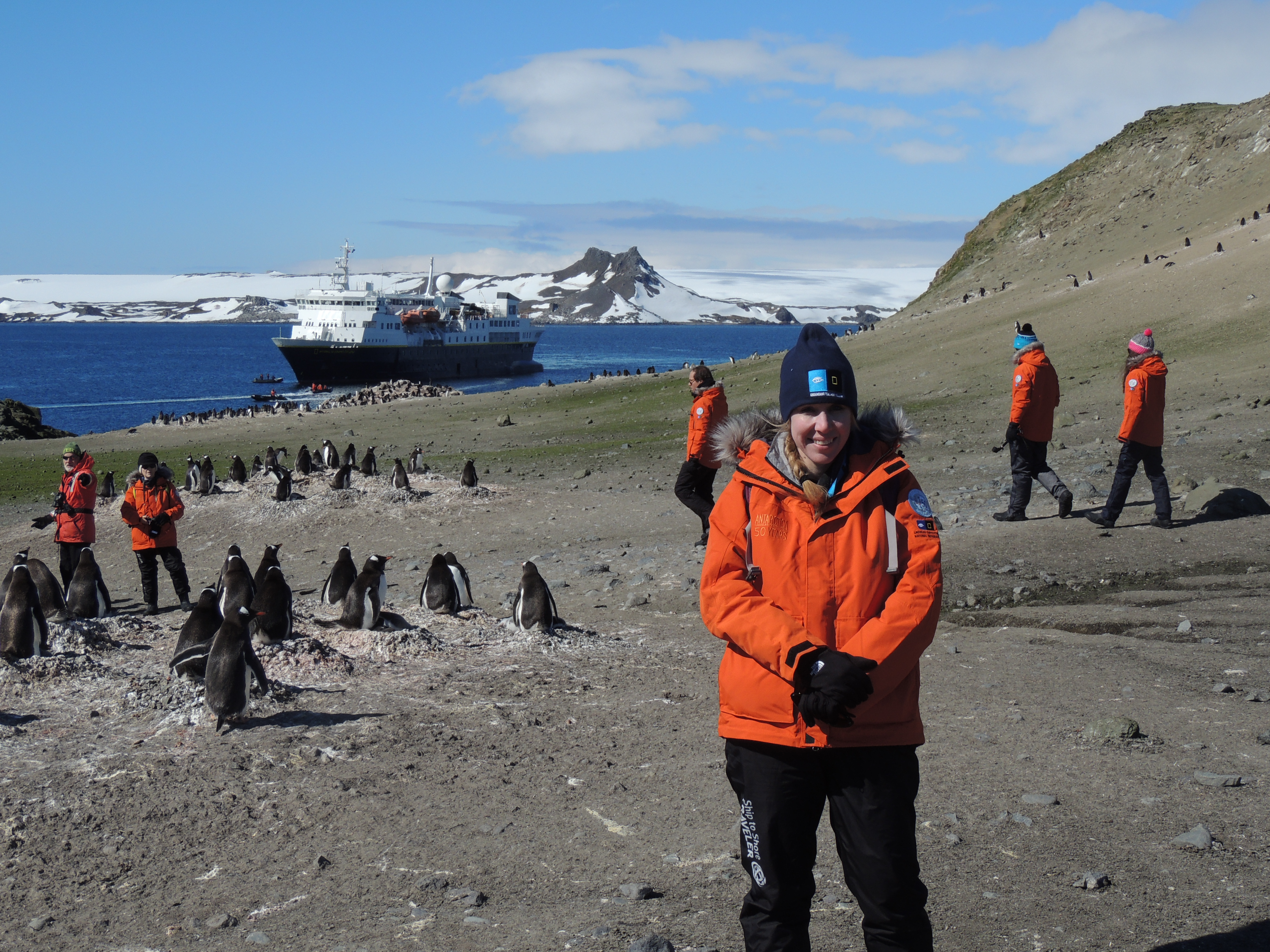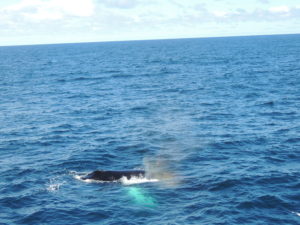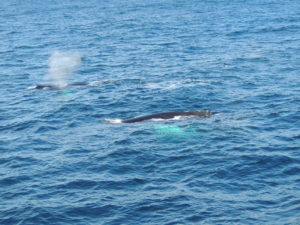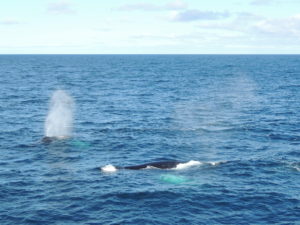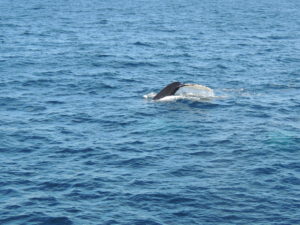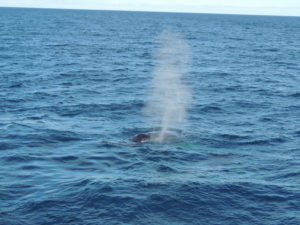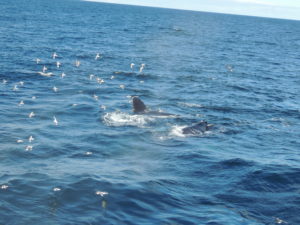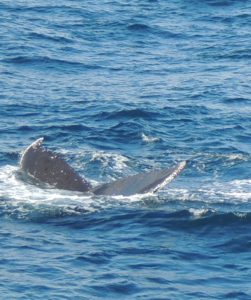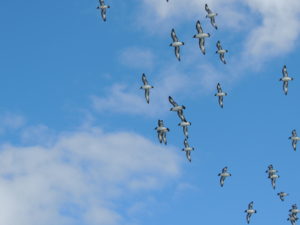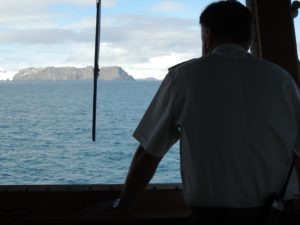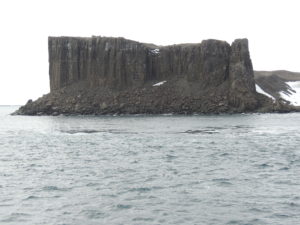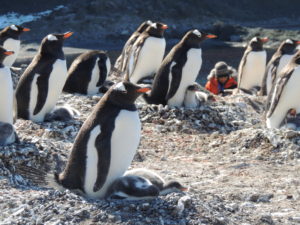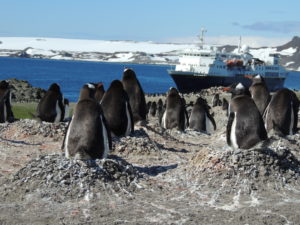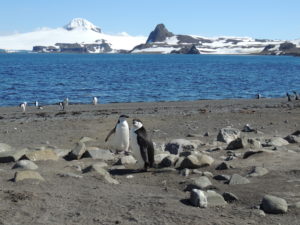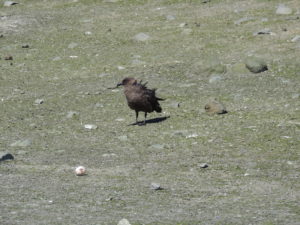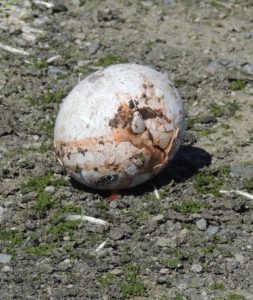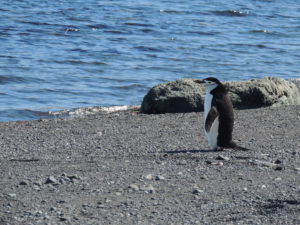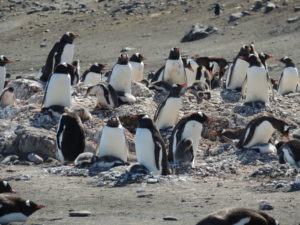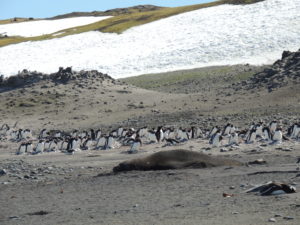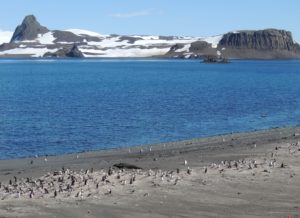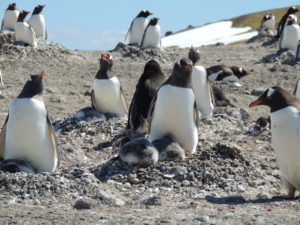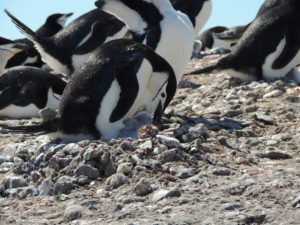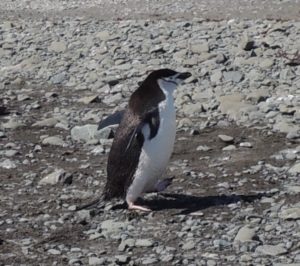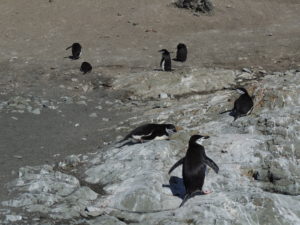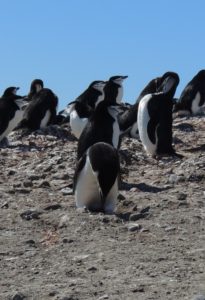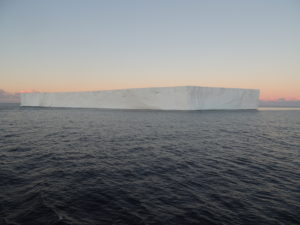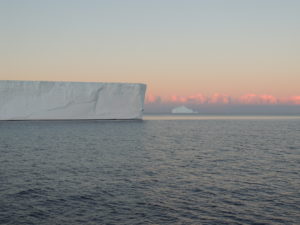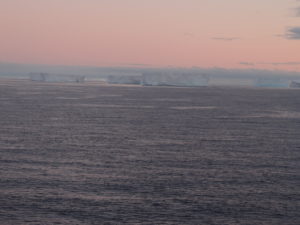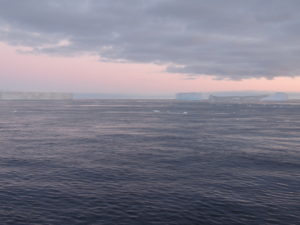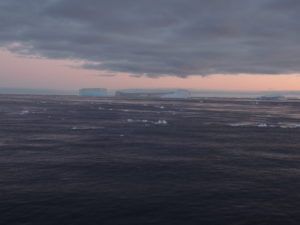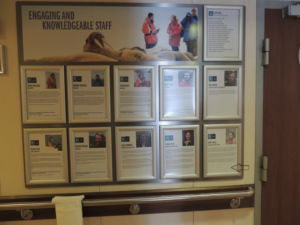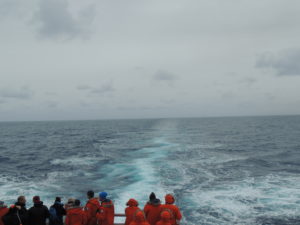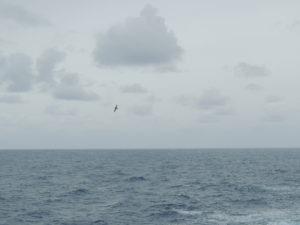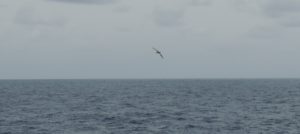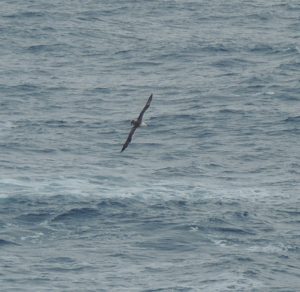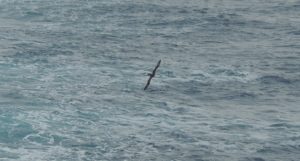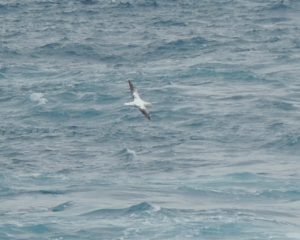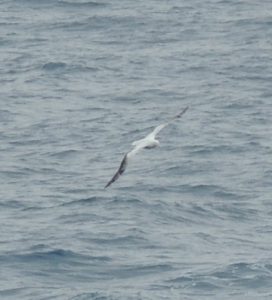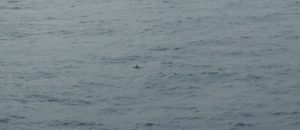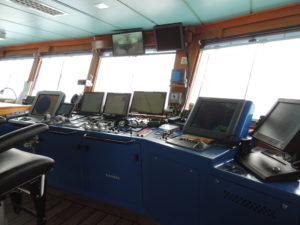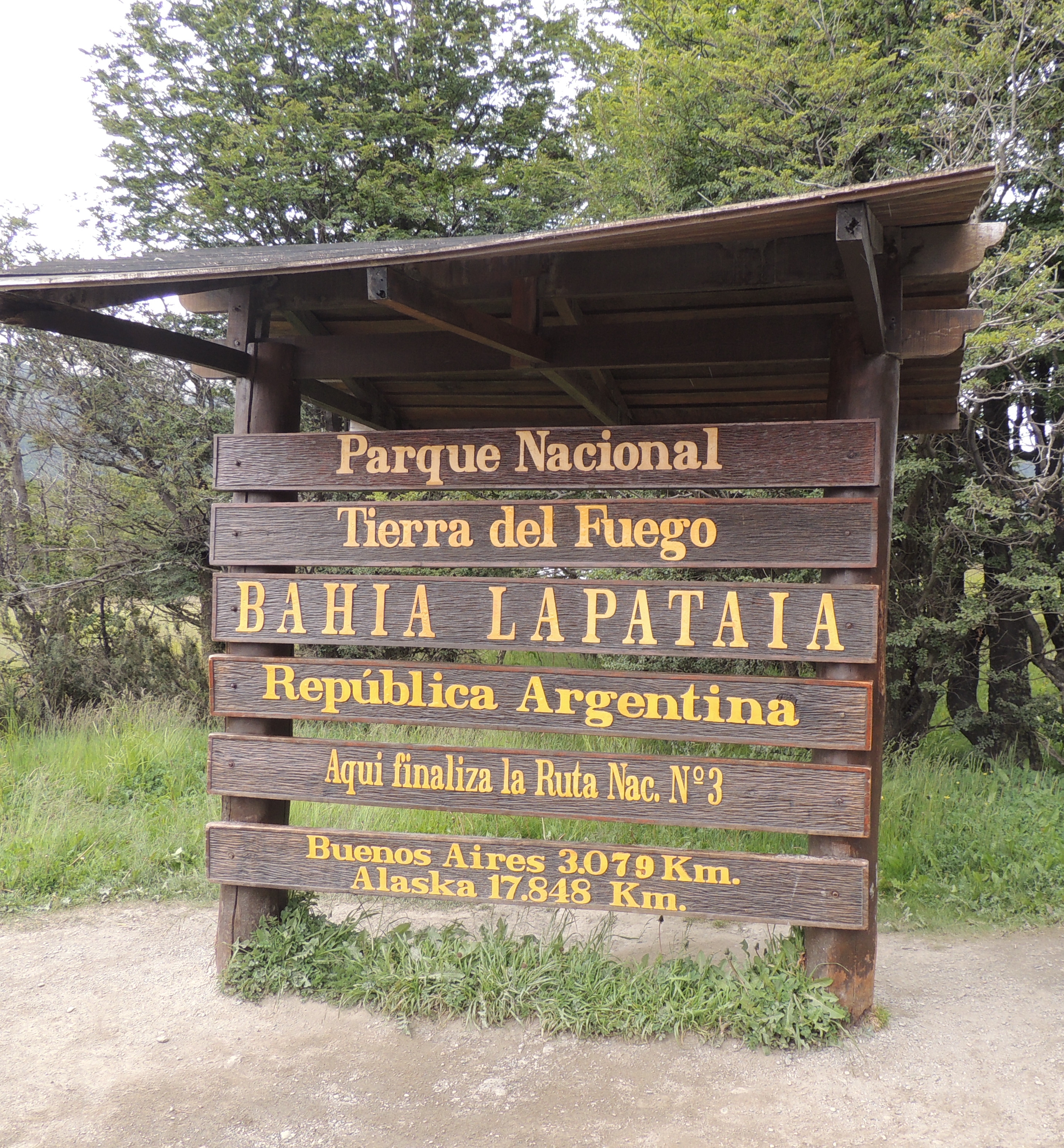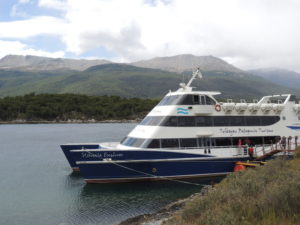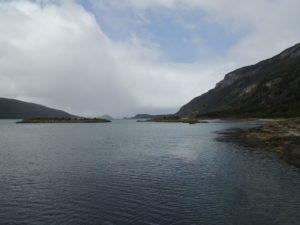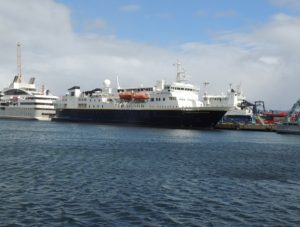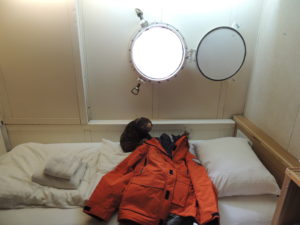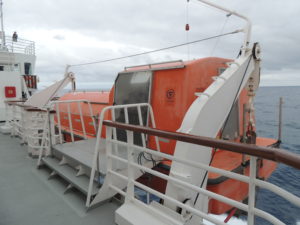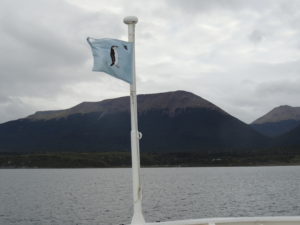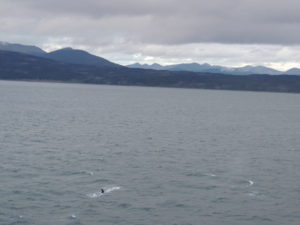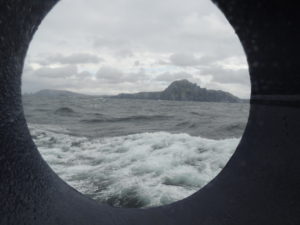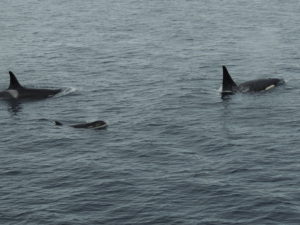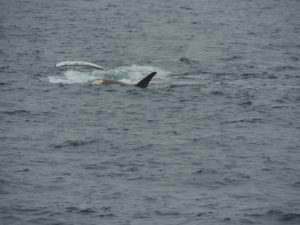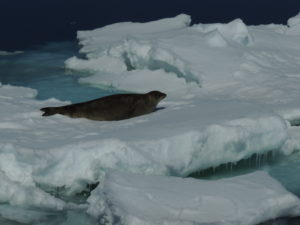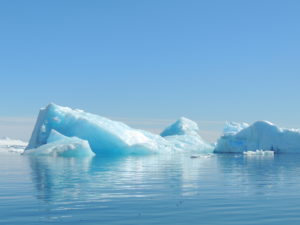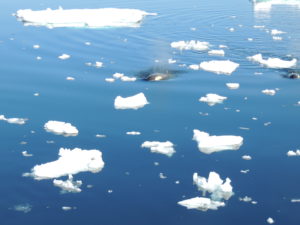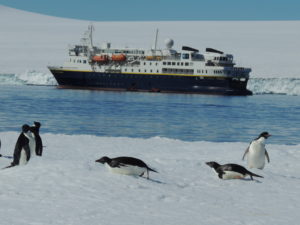This morning began with an early disembarkation as we enjoyed a scenic Zodiac tour of Cierva Cove. Our trip began with a rocky start since our Zodiac engine died about 500 yards from the ship. No need to worry, Paul was our driver and he quickly radioed the ship for assistance. We were transferred to a new Zodiac with Steven almost immediately and went on our way. During the tour we saw a number of sea birds, Primavera Station (Argentina) and some enormous ice bergs. We also saw a few Gentoo Penguins who make their home in the cove. It was a sunny morning and the water was crystal clear.
Once our tour was complete, we hopped back into a different Zodiac with Paul, Maartje, and Peter for a special GTF plankton tow. We felt very special since the second round of guests were taking their Zodiac tours and we were scheduled to cruise the bay in the Explorer – but we got to head out for a bit of science instead. Unfortunately we didn’t pick up too many critters during the tow due to the particularly clear water. We did have a lot of fun visiting with the crew and learning about cold water diving from Paul and Peter.
Just before lunch our mentor Eduardo gave a presentation on Shackleton and his legendary expedition. Shackelton’s leadership skills were unparalleled and the story of the Endurance is one not to be missed. Expect Alfred Lansing’s Endurance: Shackleton’s Incredible Voyage to be on some “must read” lists from me.
Lunch brought a surprise in the form of Humpback Whale sightings galore. Not bad entertainment. I expect we saw more than 50 Humpback Whales today… it was spectacular.
After lunch we had to report to our kayak briefing in the Lounge. I am not sure the audience was very attentive considering the numerous Humpbacks surfacing quite close to the ship. At one point I think we had 10-12 in our sightline. There seemed to be at least one who was viewable at all times. It was AWESOME.
Kayaking near the Enterprise Islands was awesome as well. During my first journey Jeanna and I managed to break our rudder so it was a bit tedious steering our kayak back to the ship. Luckily one of the rescue Zodiacs came to our aid and disconnected the rudder so we could navigate more easily (we were stuck turning left and it was incredibly difficult to make any progress). We saw the shipwrecked Governoren, a whaling ship that caught fire in 1915, that is in surprisingly good condition for its age. The ship’s shell is now home to Antarctic Terns. As we kayaked around the exposed portion, the sunken half was visible beneath the crystal clear water; this gave an eerie feeling to the cove as the glacier calved along the shoreline causing several small avalanches.
I never would have expected to enjoy kayaking in Antarctic water, but our 35 degree (ish) day was perfect for it. I was never cold and had a marvelous time. When we returned to the ship Maartje asked if I would be willing to kayak again with a guest who needed a partner. I was happy to oblige and this time saw a Crabeater seal sunning on a rock in addition to the wreck and a variety of ice bergs.
After our kayaking journey it was time for the Polar Plunge. Since the plunge occurs from the kayaking launch platform it made sense to do it today. The calm seas in the cove offered a nice venue for yet another adventure. Yes, I did the Polar Plunge! It was SOOOOOOOOOO cold! I survived and was very thankful for the warm towels, hot blueberry juice (and more) as I returned to the ship.
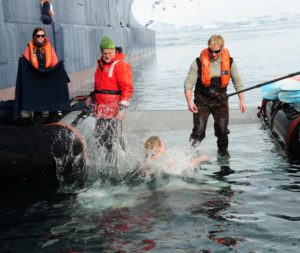 Andy, a whale scientist from Alaska, gave us some information about Killer Whales during our recap and then we were on our way to dinner.
Andy, a whale scientist from Alaska, gave us some information about Killer Whales during our recap and then we were on our way to dinner.
Dinner brought more Humpback Whale sightings out the dining room window. There were so many whales nearby that Sue, our expedition leader, cancelled the evening hike planned on Danco Island and we just enjoyed the whales and the ship breaking through the ice flows. And speaking of the ice flows, it was shortly after dinner that a lone Emperor Penguin was spotted. Emperor Penguins are extremely uncommon on the Antarctic Peninsula so it was a real treat to see it. As I stood on the bow of the ship I could see the Emperor Penguin to my right and another 5-6 whales regularly surfacing on the left – again, pure Antarctic magic as our evening entertainment.
I think I watched the whales for more than an hour from the bow before the snow started. First gently, then more intensely the weather turned a bit more blustery than it has been over the past few days. It’s funny, because I am not at all bothered by the cold here. The landscape and all of its surprises far surpass any chill – and when the chill does come, the view makes it worth a few extra minutes outside. The bow is by far the best place to view the sea life and so if you want to have the best viewing, you have to put in your time in the cold, snow and wind (though tonight is really the most noticeable of that we have had thus far). Your patience will almost always be rewarded.
Tonight’s show offered 4-5 Humpback Whales surfacing regularly right near the bow. Their blows were audible and even predictable due to our close proximity. Much of this is due to our Captain’s skill and willingness to take us to the prime location. As the snow got heavier, we approached a group of whales who were bubble feeding. Their wide mouths were visible as they lunged along the surface enjoying krill. It was beyond words – but alas, everything here is beyond words.
Tomorrow brings another full day of adventure. For now, I must sleep – though it is 11:30 p.m and I can still see clearly out my window. The sun has officially set, but there is no dark.
I love this place. I absolutely love this place.
I am so thankful for the Grosvenor Teacher Fellowship, for without it I would have missed the most exciting, magical, mesmerizing place in the world. I am forever changed by this place. Forever indebted to this place for opening my eyes to a world I could not have imagined – but it is real, and it is beautiful.
*Note: This post was written while I was on my expedition, but was not posted until after my return so that I could include pictures and videos. Thanks for following my amazing journey!
